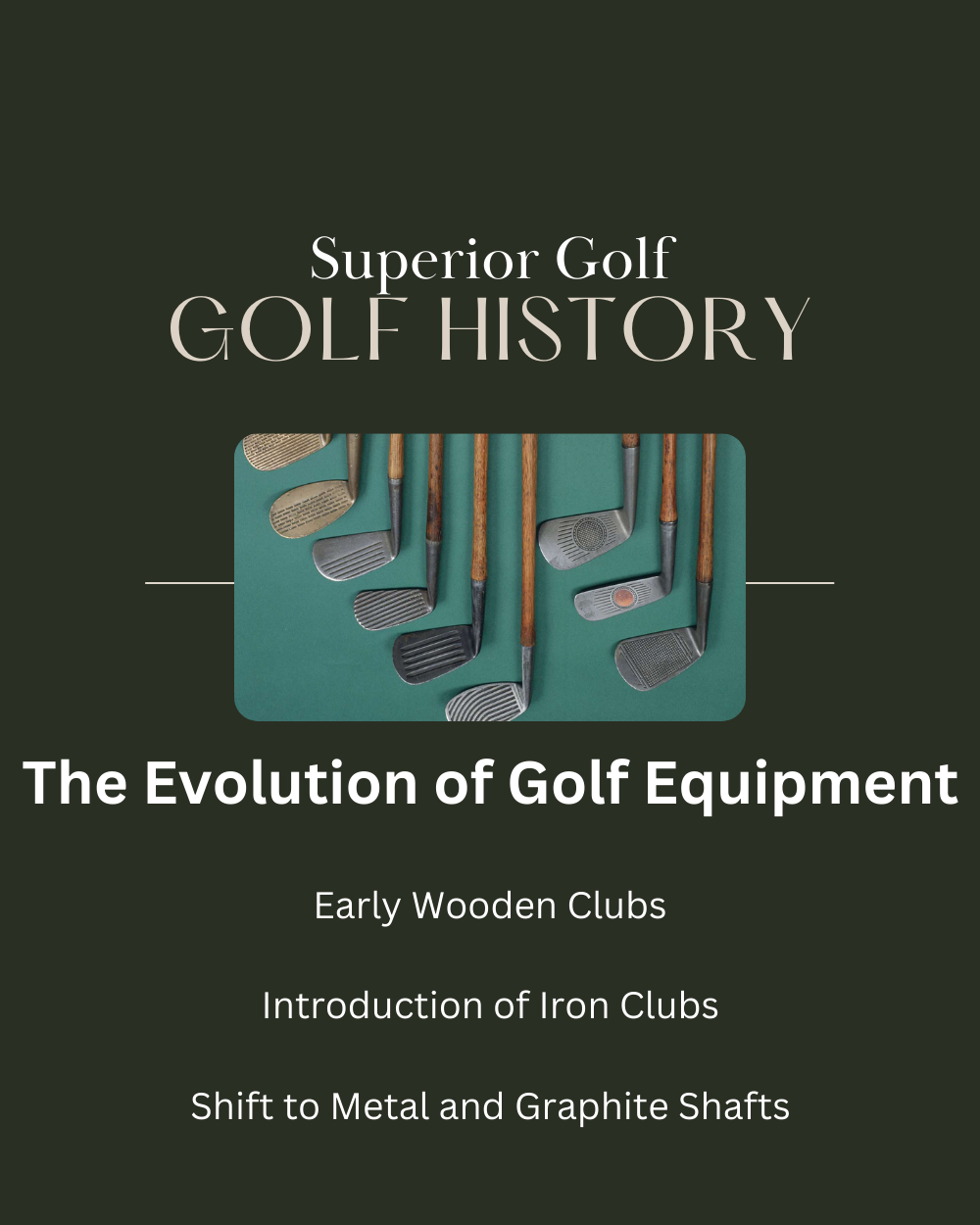Golf equipment has changed a lot, thanks to more research and development. The big change came when inventors like Karsten Solheim made PING golf clubs1. Until the early 1980s, choosing golf clubs was mostly about their look because there were no good ways to measure performance1. Players often had to choose between hitting it far, making the ball spin, or having more control1.
Now, with new technology, golfers can pick from thousands of shaft and head combinations. This lets them find equipment that matches their way of swinging1. For example, a SkyTrak launch monitor shows that a modern PXG blade outdoes an old McGregor Jack Nicklaus blade. The new blade hits 23 yards farther and reaches 12 feet higher1.
Woody Lashen, who co-owns Pete’s Golf, talks about how golf gear has moved from looking good to performing well. The modern drivers with their bigger faces and lighter weights prove this point well. They help hit the ball faster and farther than the old persimmon drivers1
Key Takeaways
- Engineering and technology have greatly shaped golf equipment’s evolution1.
- Modern clubs can be customized for each golfer’s swing style1.
- Tests show that modern clubs perform much better than old ones1.
- New drivers improve ball speed and distance because they’re bigger and lighter1.
- Experts like Woody Lashen highlight the shift towards performance in golf gear1.
The Historical Transformation of Golf Clubs
The story of golf clubs is all about the game’s deep roots and creative changes. Since the 1400s, golfers have always looked for the best gear. This quest lead to big leaps forward over the years.
Early Wooden Clubs
At first, golfers swung clubs made by local craftsmen from wood. The shafts used strong trees like ash or hazel. Heads were from tough woods such as beech or holly. A famous maker, William Mayne, even made sets for royals, showing golf’s early prestige.
The skill to make these wooden clubs was amazing. It showed the deep craftsmanship of that time.
Introduction of Iron Clubs
In the late 1800s, golf saw a big change with iron club heads2. Blacksmiths and craftsmen made this push for tougher clubs. Iron heads meant clubs broke less and played more reliably. Hickory from America became the top choice for shafts, thanks to its strength and easy supply2.
New forging ways made iron clubs even better. Added grooves let players hit further and with more spin.
Shift to Metal and Graphite Shafts
The jump to steel shafts in the early 1900s was huge for golf2. Clubs got more reliable and lasted longer. By the mid-1900s, experiments with steel and carbon mixes were underway3. These new materials meant golfers could swing harder and more accurately.
Graphite shafts later brought even better clubs. They were lighter but tough, boosting the game further.
In the end, golf clubs have come a long way from wooden to modern graphite shafts. This journey reflects non-stop innovation and better making. These improvements have made clubs last longer and helped golfers play better.
The Technological Advancements in Golf Equipment
In recent years, golf has changed a lot because of new equipment technology. Now, players enjoy better gear like advanced drivers, hybrid clubs, and improved golf balls. This gear makes the game more personal and effective.
Drivers: From Persimmon to Metal and Beyond
The change in drivers shows how golf equipment has evolved. They went from being made of persimmon wood to using materials like titanium and carbon fiber3. The switch to metal woods, like Callaway’s ‘Big Bertha’, was a game-changer3. Now, golfers can hit the ball farther and more accurately, thanks to new designs3. Features that let players adjust their clubs have really helped make gear more personal3.
The Impact of Golf Balls on Equipment Design
Golf balls have improved a lot too, with solid cores and tough covers3. The Pro V1 by Titleist is a prime example, offering long shots and good spin for different styles. Smart golf balls are now a thing4. They work with tech like TrackMan and Flightscope to improve how the ball flies and is controlled5.
Hybrid Clubs and Their Role
Hybrid clubs are a big step forward in golf clubs. They are great for those who swing slower, offering an easier option than long irons4. These clubs help players get the ball up higher and go further with the help of new materials and design5.
The technology in golf equipment, from drivers to hybrid clubs, has really changed the game. Golfers now have clubs that are tailored to them, which helps them play better. This shows how much golf is moving forward.
| Technological Innovations | Impact |
|---|---|
| Metal Drivers | Increased Distance and Accuracy3 |
| Composite Shafts | Enhanced Flexibility and Strength3 |
| Solid-Core Golf Balls | Durability and Performance3 |
| Adjustable Clubs | Customization for Swing Preferences3 |
| Smart Golf Balls | Data Tracking and Analysis4 |
| Hybrid Clubs | Forgiveness and Ease of Use5 |
and
keep changing the game. They
for players at every level.
Conclusion
Golf equipment has changed a lot, and it’s about more than just new tech. At the start, only the wealthy could play golf with fancy, hand-made clubs. Now, we have cool stuff like high-tech drivers that anyone can use. This shows how golf has become more open to everyone, no matter their skill level.
Tech upgrades in golf clubs and balls really help players improve. We’ve moved from simple wooden clubs to amazing modern gear.6Less than a third of the data for these changes comes from academic studies, proving how much effort goes into new tech. Also, over 500 people shared how these updates helped them in a survey, showing the big impact of these tech upgrades.6
Also, it’s easier for everyone to get into golf thanks to these changes. Laws help make sure that golf gear is safe and works well.6This shows a strong commitment to quality, letting players have gear that really suits them.
To wrap up, the journey of golf equipment, from simple sticks to fancy clubs, mirrors the growth of the sport itself. Embracing these advances can make golf a lot more fun. If you’re curious about the research behind golf tech, check out the AMG project’s bibliography6 and their findings on how data is used here7.
FAQ
How has golf equipment evolved over the years?
What role did Karsten Solheim’s PING golf clubs play in modern equipment development?
How did the materials used in early golf clubs differ from those used today?
What are the advantages of modern hybrid clubs?
How has technology improved the performance of golf clubs and balls?
What impact did the shift to metal and graphite shafts have on golf clubs?
Why were hickory shafts so popular during the 19th century?
How did the Pro V1 golf ball impact the game?
What are the benefits of customizable golf equipment?
How has the inclusion of grooves on club faces benefited golfers?
Source Links
- https://practical-golf.com/modern-vs-classic-golf-equipment-tested-what-has-changed
- https://blog.greenfee365.com/the-evolution-of-golf-clubs-from-wooden-wonders-to-high-tech-marvels/
- https://golf.com/gear/what-changed-most-golf-clubs-last-50-years/
- https://tracersgolf.com/the-future-of-golf-technology-whats-next/
- https://evnpar.golf/blogs/onthegreen/teeing-up-the-future-the-rise-of-technology-in-golf
- https://nap.nationalacademies.org/read/25084/chapter/13
- https://nap.nationalacademies.org/read/24975/chapter/12

